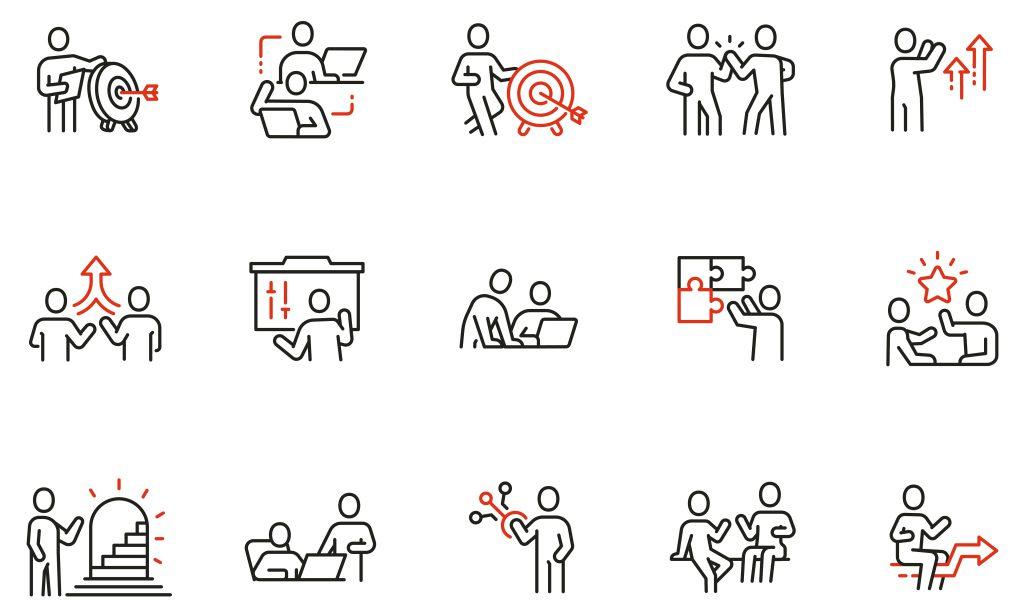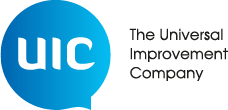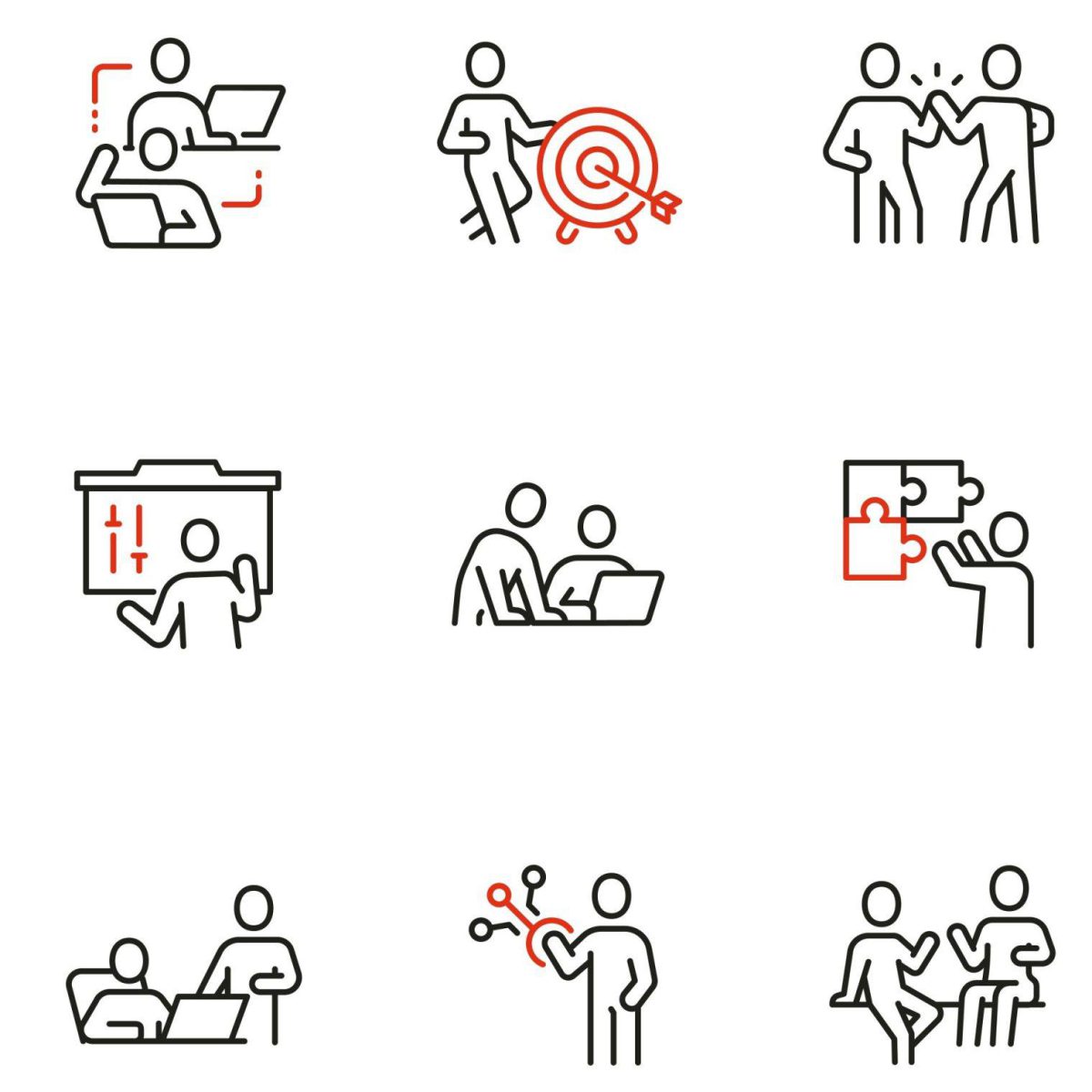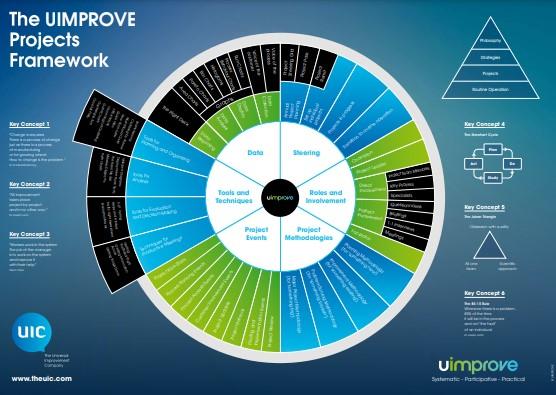Which methodology? Choosing the right project management approach
The choice of which project management approach to use is usually organisational, and sometimes individual. It’s an important question for those looking to develop their career and build a successful track record in project management.
In this post, we explore the history and origins of different approaches to projects and improvement. While most approaches will claim applicability in a range of settings, some approaches will work better than others dependant on your industry, size and organisational culture.

The market leaders
When introducing projects and project management at a conceptual level on Universal Improvement Skills, we do a comparison between UIMPROVE and ‘traditional’ project management approaches. For many years the ‘traditional’ approach was considered to be PRINCE2, the dominant player in the project management market in the 90s and 00s.
Our point in this session is not to slate PRINCE2 – or any other approach for that matter – but to highlight the contexts in which UIMPROVE may prove to be a more accessible and practical approach.
Since we first ran this session, Agile has taken over as the market leader when it comes to project management and offers a lighter-touch, more iterative approach to project management and delivery.
Our clients work in a range of sectors and it has been interesting to observe the successes and challenges they have faced in deploying each approach. The choice to adopt a particular methodology can come about for a variety of reasons – industry fit, existing in-house expertise or leadership team preference. And, occasionally, organisations can follow fads with effectively scrutinising whether an approach is the right fit for them.
It is worth looking at the origin stories of these two dominant approaches, as well as UIMPROVE –- to help shine a light on how challenges in application can come about.
(Other project management methodologies are available)
Origin stories 1: Getting things under control
PRINCE2, an acronym for PRojects IN Controlled Environments, has its roots in the 1970s, originating as PROMPT II (Project Resource Organisation Management Planning Techniques), a system developed by Simpact Systems Ltd. The UK government adopted this system in 1989, refining and enhancing it into PRINCE, which was specifically tailored for IT projects. In 1996, PRINCE was re-launched as PRINCE2, a generic project management methodology suitable for any type of project across various industries, not just in the IT sector
The emphasis of PRINCE2 on control stems from its foundational principle of organised and controlled management. PRINCE2 is designed to provide a clear framework that ensures that the project remains on course to achieve its objectives within the defined quality, time, and cost constraints. It places a strong emphasis on the division of the project into manageable and controllable stages, with defined roles and responsibilities, regular progress assessments, and decision points. This emphasis on control is integral to PRINCE2 as it allows for meticulous management of resources, risks, and potential changes, ensuring that the project’s objectives are met effectively and efficiently, and that deviations are promptly identified and addressed. In essence, the emphasis on control in PRINCE2 is about ensuring the consistent alignment of project execution with project objectives, enabling the realization of planned benefits.
Origin stories 2: Quality conquers all
The concept of Quality Management gained prominence in the post-war period, primarily due to the contributions of quality gurus like Dr. W. Edwards Deming and Joseph M. Juran. Post World War II, Japan sought to rebuild its economy and turned to experts like Deming to improve the quality and productivity of its industries.
Post-War Period:
Dr. W. Edwards Deming emphasized statistical quality control and introduced the Plan-Do-Check-Act (PDCA) cycle, focusing on continuous improvement. He advocated for the involvement of management in quality assurance and emphasized the importance of understanding consumer needs.
Joseph M. Juran focused on the human aspect of quality management and introduced the concept of the “Quality Trilogy”: quality planning, quality control, and quality improvement. He emphasized the importance of managerial commitment and training in achieving quality goals.
Surge in the 1980s:
In the 1980s, the idea of quality management experienced a resurgence, particularly in the United States, as companies faced intense competition from high-quality Japanese products. The emphasis shifted from quality control to Total Quality Management (TQM), a holistic approach involving the entire organization in a culture of quality.
Total Quality Management (TQM):
This approach focused on customer satisfaction, continuous improvement, and the involvement of everyone in the organization in quality-related activities. It aimed at improving the overall organizational performance and delivering value to customers.
The teachings of Deming, Juran, and other quality pioneers led to a paradigm shift in organizational management, emphasizing customer satisfaction, continuous improvement, and employee involvement in quality initiatives. The principles and methodologies introduced by them continue to influence modern quality management practices, including Six Sigma and Lean, helping organizations achieve excellence in quality and performance.
UIMPROVE
TQM has many relatives and descendants, including Lean/SixSigma, Kanban and numerous others. UIMPROVE is one of them, and has been developed by consultants applying quality thinking in the real world since 1992.
The UIMPROVE System of Improvement has been developed (compiled and coordinated might be better words) by the consultants of The Universal Improvement Company (the UIC), past and present. The founders and first consultants of the UIC had all applied and practiced improvement for real as employees in a variety of organisations before the UIC existed.
UIMPROVE as an approach to projects and improvement is underpinned by:
- A systematic, step-by-by-step approach
- Participation from the workforce that is meaningful and authentic
- Practical application – tools and techniques that can be used by anyone, not just a chosen few
- Integration with organisational Mission, Vision and Strategies
- Tried-and-tested methodologies
- Historical pedigree, building on the work of the quality gurus that has revolutionised the continuous improvement landscape
Over 10,000 participants in the UIC’s courses and events have had exposure to UIMPROVE in the UK, Australia, the Netherlands and Singapore.
Origin stories 3: Enter agility
The origins of Agile methodology can be traced back to the 1990s in the field of software development, where there was a growing frustration with the limitations of traditional project management methodologies like Waterfall. The Waterfall model, characterized by its linear and sequential approach, was found to be inflexible and ill-suited to accommodate the rapid changes and evolving requirements common in software projects.
The Agile Manifesto
The formal inception of Agile methodology occurred in 2001 when seventeen software developers convened in Snowbird, Utah, to discuss lightweight development methods. This meeting resulted in the creation of the Agile Manifesto, a set of four key values and twelve principles designed to guide software development processes. The Agile Manifesto emphasizes:
- Individuals and Interactions over processes and tools.
- Working Software over comprehensive documentation.
- Customer Collaboration over contract negotiation.
- Responding to Change over following a plan.
Core Principles
Agile methodologies prioritize customer satisfaction through the continuous delivery of valuable software, welcome changing requirements, and emphasize the importance of regular reflections to enhance agility. Agile promotes a collaborative environment where cross-functional teams work together to deliver high-quality products in short, iterative cycles or sprints, allowing for rapid feedback and adjustments as needed.
Evolution
Since its inception, Agile has evolved and expanded beyond the realm of software development, influencing various industries and domains. Numerous Agile frameworks and approaches, such as Scrum, Kanban, and Lean, have been developed, each catering to different needs and contexts but adhering to the core values and principles of the Agile Manifesto. Agile’s emphasis on flexibility, collaboration, and customer value has made it a preferred choice for many organizations navigating the complexities and uncertainties of today’s dynamic business environment.
Do origins matter?
A question we are often asked on our courses, especially when digging deep into the origins of quality management is, ‘that’s all well and good for manufacturing settings, but what about non-manufacturing?’
The same question can be asked about PRINCE2 in relation to non-governmental settings, and Agile with respect to non-software projects.
The reality is, all these approaches have been continuously improved, iterated and expanded upon in order to find applicability in a broader market.
However, these origin stories do still have some bearing on the challenges that people can face when applying different methodologies, or the wrong methodology for their project.
PRINCE2 can feel heavy-handed, and administratively burdensome.
Agile can be too iterative, dependent on the product being worked on.
The purpose of this blog post isn’t dismantle these very sophisticated giants of project management. It is, however, worth keeping in mind that the origins of these approaches mean they won’t always be the ideal fit for your organisation, whatever claims providers may make to the contrary.
Questions to ask when choosing a project management approach:
If you are trying to figure out the best project management approach, or are struggling with the approach you are using currently, it is worth asking yourself and your team the following questions:
- How does this approach connect to our organisation’s strategies?
- How do project outputs fit with our product and means of production?
- What kind of reskilling is required to embed this approach?
- Can we embed it consistently across the business?
- How inclusive and accessible is the approach?
- How important is ‘control’ given the scale and complexity of our project(s)?
- How important is iteration?
- What does the scale and complexity of this project require in terms of our approach?
- Which approach will deliver maximum benefit for our people and customers?
- Do our projects require specialist project management expertise?
Conclusion
The journey through the origins and evolution of various project management methodologies reveals the diversity in approaches and the importance of context in selecting the most suitable one. Whether it’s the structured control of PRINCE2, the continuous improvement focus of Quality Management, or the flexible and adaptive nature of Agile, each methodology has its unique strengths and challenges. Understanding these nuances and the underlying principles of each approach is crucial for organizations to align their project management strategies with their goals effectively. It is imperative to remember that there is no one-size-fits-all solution, and the choice of methodology should be a thoughtful decision, considering the specific needs, environment, and objectives of the organization and the project at hand. By doing so, organizations can navigate the complexities of project management and drive their projects to successful outcomes, fostering innovation, efficiency, and value creation in their endeavours.





